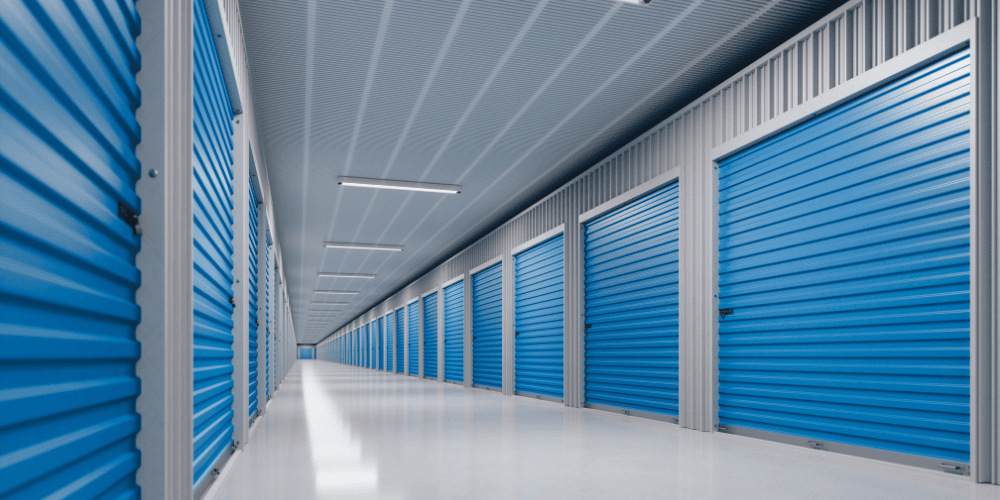What Is a Cold Storage Facility? Key Features and Uses

From food distribution to pharmaceuticals, industries across the U.S. rely on a cold storage facility to keep products safe, fresh, and compliant. With growing demand for e-commerce grocery delivery, global supply chains, and life sciences innovation, cold storage has become one of the most sought-after property types in commercial real estate.
But what exactly is a cold storage facility, and why is it so important? Let’s break down the essentials.
1. What Is a Cold Storage Facility?
A cold storage facility is a specialized warehouse designed to store temperature-sensitive products. Unlike standard warehouses, these facilities are equipped with advanced refrigeration and climate-control systems that maintain specific temperature ranges — from chilled environments above freezing to deep-freeze conditions as low as -20°F or colder.
These spaces are critical for industries such as:
- Food and Beverage – fresh produce, meat, seafood, and dairy products
- Pharmaceuticals and Biotech – vaccines, blood samples, biologics, and lab materials
- Retail and Grocery – e-commerce grocery orders and seasonal products
- Agriculture – storage of seeds, crops, and agricultural biotech materials
2. Key Features of a Cold Storage Facility
A well-designed cold storage facility balances efficiency, safety, and compliance. Key features include:
2.1 Temperature Zones
- Chilled storage: 32–55°F for products like dairy or produce
- Frozen storage: 0°F or below for meats and seafood
- Ultra-low temperature rooms: -80°F for pharmaceutical or biotech applications
2.2 Advanced Insulation and Refrigeration
Walls, ceilings, and flooring are heavily insulated to reduce energy loss. Facilities use industrial-grade refrigeration units to ensure stable temperatures even during peak demand.
2.3 Backup Power and Redundancy
Because a temperature failure could lead to millions in losses, most facilities are equipped with backup generators and redundant systems to protect inventory.
2.4 Loading Docks and Airlocks
Specialized loading docks and airlock systems reduce temperature fluctuations during loading and unloading.
2.5 Safety and Compliance Standards
Facilities are often built to meet FDA, USDA, or GMP (Good Manufacturing Practices) requirements, depending on the product stored.
3. Uses of Cold Storage in Commercial Real Estate
3.1 Food Supply Chains
Cold storage is the backbone of food distribution, ensuring perishable items move seamlessly from farms to grocery shelves to restaurants.
3.2 Life Sciences and Biotech
Pharmaceutical and biotech companies use cold storage for lab samples, vaccines, and biologics. With biotech growth in hubs like the Bay Area and Boston, demand for highly specialized cold storage real estate has risen sharply.
3.3 E-Commerce and Grocery Delivery
The rise of online grocery services has fueled demand for last-mile cold storage facilities near urban centers. This proximity ensures faster deliveries and fresher products.
3.4 Agriculture and Seasonal Products
Farmers and agricultural companies rely on cold storage to maintain seed banks, extend crop life, and stabilize supply across seasons.
4. Why Cold Storage Real Estate Matters
Cold storage is one of the most resilient asset classes in commercial real estate. Demand continues to outpace supply, driven by:
- Biotech expansion and stricter temperature requirements
- Consumer expectations for fresh and fast food delivery
- Supply chain resilience in a post-pandemic economy
For investors, landlords, and tenants, cold storage facilities represent both a challenge — due to higher buildout costs — and a long-term opportunity in a sector with stable demand.
Conclusion
A cold storage facility is more than just a warehouse — it’s a highly specialized piece of infrastructure supporting industries that can’t afford to compromise on quality or safety. Whether preserving food, protecting biotech samples, or enabling e-commerce growth, these facilities play a critical role in modern life.
At IPG, we help clients identify and secure cold storage facilities that fit their operational needs — from move-in ready solutions to tailored spaces designed for long-term growth.




